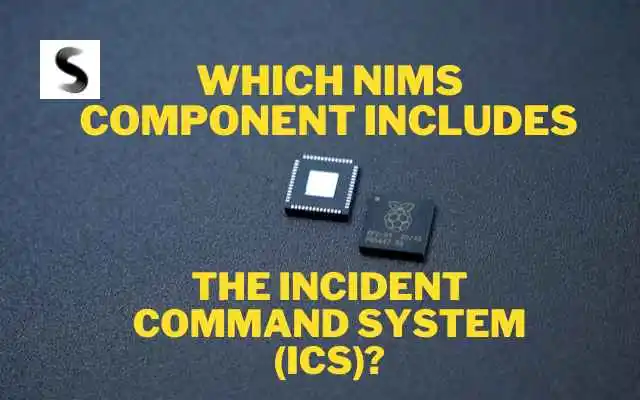National Incident Management System (NIMS) and explain its purpose. That the Incident Command System (ICS) is a crucial part of NIMS, and the blog post will focus on identifying the specific NIMS component that includes ICS.
What is ICS?
ICS, short for Incident Command System, is a vital framework emergency response organizations employ to handle incidents of varying scales and complexities efficiently.
It ensures a standardized approach to incident management, promoting smooth information and resource flow among agencies involved.
The ICS structure comprises five key functional areas: Command, Operations, Planning, Logistics, and Finance/Administration, each with specific roles during an incident.
Emphasizing clear communication and unified command, adopting ICS enhances emergency response capabilities and coordination.
What Is the Incident Command System (ICS)?
The Incident Command System (ICS) is a standardized approach with principles and protocols for managing emergency incidents. Developed in the 1970s by the United States Forest Service, ICS provides a clear structure for effective communication, coordination, and decision-making during emergencies.
Its flexible and scalable design allows utilization for incidents of all sizes, emphasizing clear roles, responsibilities, information sharing, and resource allocation. Implementing ICS ensures a coordinated and efficient emergency response.
Identifying the NIMS Component with ICS
Within the National Incident Management System (NIMS), the component that includes ICS is the Command and Management component.
This segment provides the organizational structure, processes, and procedures for managing incidents and coordinating response efforts, making ICS a fundamental part of establishing a standardized hierarchy and roles for incident management.
The NIMS Component Overview
NIMS is a comprehensive framework comprising four key components: Command and Management, Preparedness, Resource Management, and Communications and Information Management.
The Command and Management component establishes the structure for incident response, featuring the adaptable Incident Command System. Preparedness focuses on planning, training, and exercising.
While Resource Management coordinates resource allocation. Communications and Information Management ensure timely information sharing. Implementing NIMS components enhances effective incident response.
Advantages of Including ICS in NIMS
Incorporating the Incident Command System (ICS) into the National Incident Management System (NIMS) provides numerous benefits. ICS offers a standardized structure for coordinated responses, streamlining communication and enhancing overall efficiency.
It facilitates effective decision-making, resource allocation, and integration of agencies, promoting a collaborative approach. ICS also improves responder safety through comprehensive incident management strategies. Its inclusion in NIMS enhances emergency response capabilities, ensuring effective and efficient incident management.
Conclusion
Careful consideration of the information in this article is essential before making judgments or decisions. The various points highlighted emphasize the complexity of the topic.
Data analysis reveals multiple factors contributing to the overall outcome, necessitating a balanced evaluation of pros and cons and potential consequences for each action.
